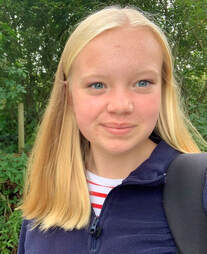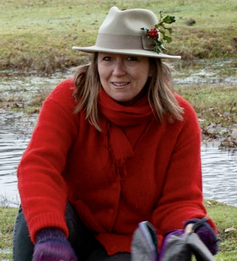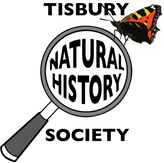|
At our Christmas meeting on Thursday December 15th we will be holding a competition to find the best photos taken by our members.
There will be 6 categories: Birds Invertebrates Mammals Fungi Landscapes Plants Members will receive an email with the details of how to submit your photos. You can also contact us for the relevant details via the Contact page. Maximum of one photo per category per participant and the deadline is Sunday 11th December. The photos will be displayed on the screen at the front of the hall before the talk starts, judging will be by the audience and the results will be posted on Facebook and on this website. Rebecca Twigg started her talk last week by stressing the relative unimportance of honey bees compared with wild pollinators such as solitary bees, bumblebees, moths, butterflies, hoverflies and beetles. She gave several examples of solitary bee species that are commonly found in gardens such as the Ashy and Tawny mining bees, as well as the recently arrived Ivy bees, and explained interesting details about their lifecycles and habitat requirements. Later, she gave us examples of the best garden flowers for pollinators, natives as well as exotics.
She stressed the importance of having flowers blooming all year round, with Heathers from late winter, Lungwort in early spring and continuing right through to early winter with Mahonia, for example. Rebecca explained how she restocks her garden by swapping plants, growing from cuttings and collecting seeds rather than buying from nurseries. Rebecca pointed out how planting in drifts is so important, so the bees don’t have to waste energy flying between individual flowers, making sure there’s a variety of flower types, e.g., Foxgloves for long-tongued bumblebees and daisies for short-tongued hover-flies. Rebecca then spoke about creating different habitats in gardens, to provide for the diverse requirements of different pollinators. Drilling holes between 5 and 8mm and pencil length into wooden panels, logs or posts placed in warm, sunny situations can provide valuable nesting sites for solitary bees. The importance of having areas of short and longer (flower rich) grass in a lawn to cater for mining bees, which need warm soil to complete their lifecycle, was emphasised. We recommend walking the Salisbury Bee Trail which Rebecca is responsible for laying out and for which she won an award. by Peter Shallcross  We are very proud of Izzy, our co-founder of Young Nature Watch, because she was runner up for the Countryfile Young Countryside Champion award this year. On BBC1's Countryfile last Sunday 13th November, short films were shown about each of the three finalists in their local areas, talking about how they protect wildlife, biodiversity and their plans for the future. Do see if you can catch it on iplayer. Being one of only three finalists for this national award is a major achievement. Well done, Izzy! Join us in the Victoria Hall, Tisbury for Rebecca Twigg's talk on Thursday 17th November. The bar is open from 7pm and the talk starts at 7:30pm. Free to members and those under 21. Adult guests welcome for £2 per ticket.
A new venture for the Society, a screening of the film Kiss the Ground on Thursday 24th November at 6:00PM in the Victoria Hall, in which experts and activists unpack ways in which the earth's soil may be the key to combating climate change and preserving the planet. “Kiss The Ground, stands above its contemporaries by doing one simple thing. Presenting a feasible solution to the problem of climate change whilst not being foolheartedly optimistic. This documentary dives into the world of sustainable farming and soil rejuvenation, offering a hopeful look into simple, approachable practices for a better tomorrow.”
“This is definitely one of those documentaries that everyone should watch. Climate change and global warming are things that impact us all, and the ideas presented in this film gives me hope that it CAN be reversed.” Tickets: on the door – Adults £1 each. Under 21s free. Victoria Hall, High St, Tisbury (opposite the garage)  This month we welcome Rebecca Twigg, founder of Salisbury's Secret Garden. Rebecca is an organic gardener with a passion for the natural world who received a DEFRA award for the Salisbury Bee Trail project. She has now started a new community garden at the Five Rivers Health and Well-being Centre and an additional ‘green space kick start’ scheme for those wanting to take on a patch of ground themselves. She says: “Exploration outside is absolutely in my heart, there is something magical about immersing yourself in nature …these interactions shape our values and abilities to manage in an ever-changing world too.” As last month, the Victoria Hall bar will be open from 7:00PM to serve wine, beer and soft drinks before the meeting. We plan, as usual now, to live-stream Rebecca’s presentation over Zoom for anyone not able to attend in person; I’ll send out the Zoom link to members a few days before. Attending our meetings is free for members and anyone under 21; adult visitors are asked for a £2 contribution. If you are not a member but would like to come along, please get in touch via the contact form. The Victoria Hall is on the High St, Tisbury, opposite the garage. Leif Bersweden was brought up near here so visiting us last month was, appropriately enough, something of a return to his roots. A bright, engaging speaker, he was bursting with enthusiasm for his subject.
He set about the topic by describing how he became interested first in animals and then in plants and flowers as a boy, and went on to describe the journey he recently made across the whole of the British Isles, largely on bicycle, to explore the range of plants that grow here, their habits and their habitats. He travelled as far west as the lizard Peninsula in Cornwall, as far east as the South East corner of England, at Deal in Kent, via the Norfolk Broads and Scarborough in Yorkshire, as far north as the Shetland Isles, and across the island of Ireland to sites in both Derry in the north and Cork in the far south west. Much of his talk was made up of descriptions of the sights and specimens he found most amazing; some that we may consider familiar such as the glorious spring-time carpets of bluebell woods on the South Downs or in Hampshire; or the unfamiliar characteristics of common plants such as the fact that Lords-and-ladies is capable of generating heat; or the truly unexpected carnivorous greater bladderwort, growing in the Norfolk Broads. Leif’s sheer delight at all of these was truly infectious; a delight to listen to. The background, of course, which he did not shy away from, is that wildflower populations are threatened everywhere, by population growth, changes in agricultural practices and intensity, and by climate change. And the familiarity people used to have with wild plants in their locality, their names, their uses, has largely disappeared. But there were light hearted touches, too, such as the anecdote he told of how embarrassed he was when apprehended, camera in hand, while taking pictures of a particular plant native to a coastal sand-dune, by a couple of members of the nudist colony that also occupied the area. Overall Leif’s message was determinedly up-beat. Our wildflower heritage is something wonderful and to be cherished. He filled his audience with enthusiasm and pleasure that reflected his own – and sold a fair number of copies of his recently published book as a result! by Richard Budden There is not much difference between doves and pigeons, as they are all related in the same bird family. We seem to refer to the smaller more delicate looking species as doves and apply the term pigeon to larger woodpigeons and feral pigeons.
All feral pigeons descend from escaped domesticated Rock Doves, now relatively scarce in the UK and only found on the coasts of north and west Scotland. Also increasingly scarce is the Turtle Dove, whose populations have plunged in recent years because of habitat loss and agricultural changes. This is a great shame as it has an attractive purring call and the plumage of its wings, which resembles the pattern of a turtle shell, is quite beautiful. In contrast, the Collared Dove only colonised the UK in the 1950’s but is now common. It is easily identified by the dark collar of plumage on its neck and seems just as comfortable in towns and villages as in the countryside, often visiting gardens and nesting around houses. The other native dove, the Stock Dove, is rarely seen in urban areas favouring instead open country with trees in which it can find nesting cavities. The parkland with aged trees in the vicinity of Wardour Castle always seems a good place to see them. They are smaller than Woodpigeons, have a glossy green band on the back of their neck and partial dark bars on their wings. In flight they look generally blue grey. The larger Woodpigeon has a distinctive white patch on its neck, a pink breast and white wing bars which are very visible in flight. It is a familiar bird of gardens, parks woodland and farmland. Due to its monotonous call and its willingness to trample over everything in search of food, it is unpopular with gardeners, as well as a occasional agricultural pest. The noise of the males’ clashing wings battling during courtship rituals, often punctuates a summer’s day. The clatter of wings as a Woodpigeon takes off also gives warning to other wildlife of our approach, when out trying to observe wildlife undetected. In the right conditions, they can breed throughout the year, but little effort goes into nest building. It is usually a flimsy affair made of a few sticks, and users of Tisbury station will probably have noticed the unimpressive efforts made on the underside of the roof, much of which ends up on the platform. Depending on the weather, and food availability on the continent, there can be significant movements of Woodpigeons into this country in winter. At such times, massive flocks can be seen crossing the skies, an impressive sight. by Andrew Graham |
Photo: Avocets (Izzy Fry)
The headers display photos taken by our members. Do get in touch via the Contact Form if you'd like to submit a photo for selection.
Archives
May 2024
Categories
All
|


 RSS Feed
RSS Feed